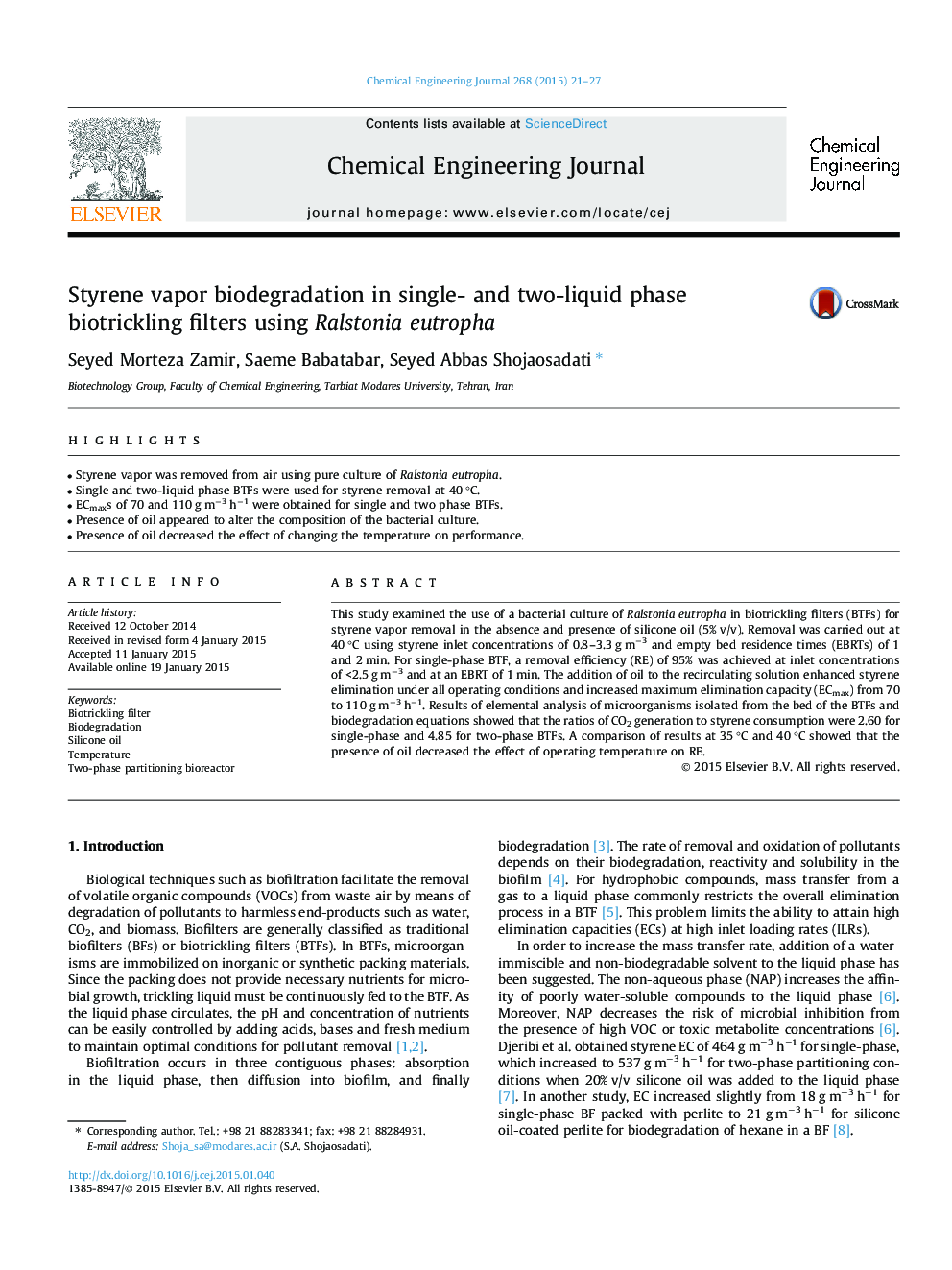| Article ID | Journal | Published Year | Pages | File Type |
|---|---|---|---|---|
| 146557 | Chemical Engineering Journal | 2015 | 7 Pages |
•Styrene vapor was removed from air using pure culture of Ralstonia eutropha.•Single and two-liquid phase BTFs were used for styrene removal at 40 °C.•ECmaxs of 70 and 110 g m−3 h−1 were obtained for single and two phase BTFs.•Presence of oil appeared to alter the composition of the bacterial culture.•Presence of oil decreased the effect of changing the temperature on performance.
This study examined the use of a bacterial culture of Ralstonia eutropha in biotrickling filters (BTFs) for styrene vapor removal in the absence and presence of silicone oil (5% v/v). Removal was carried out at 40 °C using styrene inlet concentrations of 0.8–3.3 g m−3 and empty bed residence times (EBRTs) of 1 and 2 min. For single-phase BTF, a removal efficiency (RE) of 95% was achieved at inlet concentrations of <2.5 g m−3 and at an EBRT of 1 min. The addition of oil to the recirculating solution enhanced styrene elimination under all operating conditions and increased maximum elimination capacity (ECmax) from 70 to 110 g m−3 h−1. Results of elemental analysis of microorganisms isolated from the bed of the BTFs and biodegradation equations showed that the ratios of CO2 generation to styrene consumption were 2.60 for single-phase and 4.85 for two-phase BTFs. A comparison of results at 35 °C and 40 °C showed that the presence of oil decreased the effect of operating temperature on RE.
